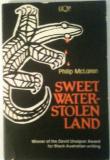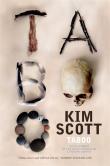AustLit
-
The Killing Times is a database and geospatial map of Australia's Frontier war massacre sites. The site goes through a timeline of Australia's bloodied history and readers are advised that this might trigger. It was developed by the University of Newcastle Professor Lyndall Ryan and the Colonial Frontier Massacres Project team, C21CH, and Melbourne University Centre for Advancing Journalism.
BlackWords Search: Aboriginal Massacres, Murders and Poisonings
AustLit Search: Massacres, Murders and Poisonings.
-
See full AustLit entry
'Blood on the Wattle records the massacres, maltreatment and spread of the white men's diseases that resulted in these astounding figures. It describes all of the major massacres of Australian Aborigines which have occurred since the arrival of the first fleet in 1788. From the early attacks on the Aborigines of the Sydney basin through the long history of the violence along the frontier to the final massacres in the Northern Territory and northern Western Australia in the late 1920s, the book tells of the plight of the Aborigines who were killed by the gun, the sword, disease and poisoning.
(...more)Bruce Elder's work lists a number of the massacres of the Australian colonial experience which this trail uses as a framework to draw together the literature and narratives of those times and places. -
In 1838 white invaders murdered 28 Aboriginal men, women and children near Myall Creek Station. Eleven men were charged with murder and tried at the Supreme Court in Sydney on 15 November 1838. After the first trial, the jury found the the eleven men not guilty. After an appeal, seven of the men were charged with murder of a 'child unknown'. The men confessed to their crime but their defence was,
'They did not realise that it was illegal. They did not realise that it carried the death penalty. It had never occurred to these men, brutalised by the values of the society in which they lived, that the real rule of law actually existed. They were victims of their society; a society which suffered ethical schizophrenia. Laws were bent into fantastic shapes by expediency and a class-ridden autocracy." (Elder,1998)
-
The poem is about the retribution that was sought by white people after it was alleged that a Ngarrable [sic] man slaughtered a cow to feed his family on Kamilaroi country. (...more)See full AustLit entry
-
“The killings of white man’s cattle
Was proved to be a lie
The white man only wanted to see
Black family die
And to let this be a warning to be
Known in every state
That a white man turns to killing
When his heart is full of hate.
But justice was at hand that day
And the word was spread around
That the killers of the black men
Were to be shot when found
Now all these men were punished
Although angry words were said
But they all went to the gallows with
ropes around their heads.”
An extract from Myall Massacre - Ivan Connors 1999
-
 This image has been sourced from online.'The destinies of two families, black and white, are fatally interwoven... in this frontier novel. Racial brutality and the tragic account of the Myall Creek massacre underscore the story of Ginny and Wollumbuy, Kamilaroi people of Warrumbungle Range. Mysterious killings follow the arrival Karl and Gundrun Maresch, a German couple who establish a Lutheran mission near the young settlement of Coonabarabran.' (Source: Publisher's blurb) (...more)See full AustLit entry
This image has been sourced from online.'The destinies of two families, black and white, are fatally interwoven... in this frontier novel. Racial brutality and the tragic account of the Myall Creek massacre underscore the story of Ginny and Wollumbuy, Kamilaroi people of Warrumbungle Range. Mysterious killings follow the arrival Karl and Gundrun Maresch, a German couple who establish a Lutheran mission near the young settlement of Coonabarabran.' (Source: Publisher's blurb) (...more)See full AustLit entry -
 This image has been sourced from online.'In 1928 in Central Australia, the killing of a European by an Aboriginal man led to expeditions by a police party that resulted in many Aboriginal deaths. These killings are known as the Coniston massacre. How did society view these tragic events? Did Aboriginal people have a voice in 1928? Seventy-five years later, the groups affected shared their experiences at a special commemoration for the Coniston massacre.' Source: Libraries Australia (...more)See full AustLit entry
This image has been sourced from online.'In 1928 in Central Australia, the killing of a European by an Aboriginal man led to expeditions by a police party that resulted in many Aboriginal deaths. These killings are known as the Coniston massacre. How did society view these tragic events? Did Aboriginal people have a voice in 1928? Seventy-five years later, the groups affected shared their experiences at a special commemoration for the Coniston massacre.' Source: Libraries Australia (...more)See full AustLit entry -
See full AustLit entry
'Norman washes the clothes by hand in water drawn from the Hawksbury River, which runs through part of the artist’s ancestral country. The Hawksbury region was one of the first areas outside of Port Jackson (Sydney) to be occupied by free settlers, and saw some of the earliest and bloodiest conflicts between local clans and Europeans.'
'Norman washes the clothes silently and hangs them to dry on lines which intersect the space. When the clothes are hung out, they form an unstable surface for a looping projection of analogue slides, each hand inscribed with the name, date and location of every documented massacre of Indigenous people that has taken place on the Australian continent under British colonial rule.
(...more) -
 Cover image courtesy of publisher.See full AustLit entry
Cover image courtesy of publisher.See full AustLit entry'From Kim Scott, two-times winner of the Miles Franklin Literary Award, comes a work charged with ambition and poetry, in equal parts brutal, mysterious and idealistic, about a young woman cast into a drama that has been playing for over two hundred years ...
'Taboo takes place in the present day, in the rural South-West of Western Australia, and tells the story of a group of Noongar people who revisit, for the first time in many decades, a taboo place: the site of a massacre that followed the assassination, by these Noongar's descendants, of a white man who had stolen a black woman.
(...more) -
See full AustLit entry
'Freda Glynn was never a big talker but these days she talks even less. When her documentary filmmaker daughter Erica Glynn tells her she wants to make a film about her, Freda responds simply with a shrug. And yet Freda has so much to relate. She could, for instance, talk about how she ran CAAMA, the Central Australian Aboriginal Media Association, an organisation that has been dedicated to Aboriginal music and culture since the early 1980s. Or perhaps how she trained Indigenous filmmakers at Imparja Television, casually managing to raise five children on her own at the same time.
(...more)
You might be interested in...



